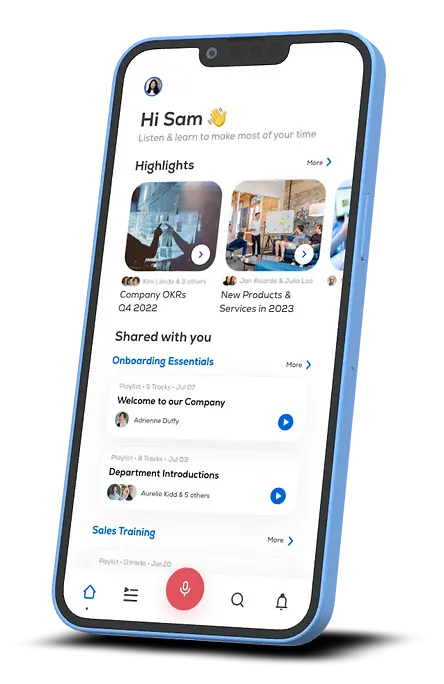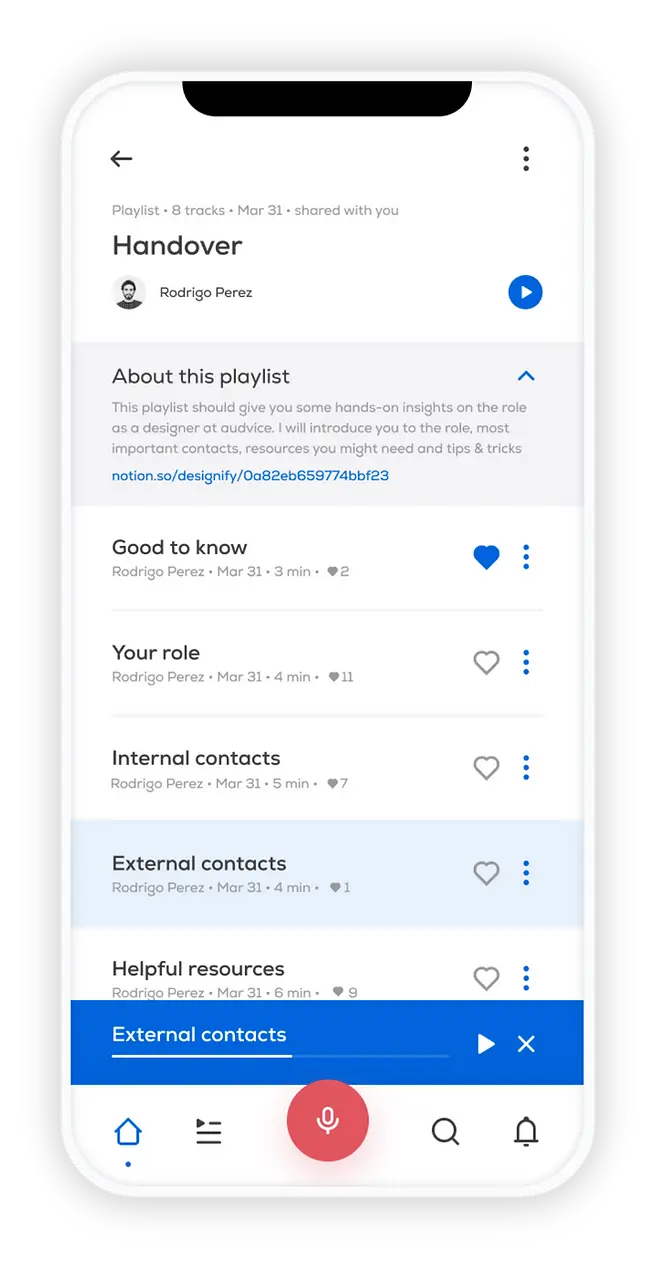The knowledge and on-the-job experience your employees gain while working for your company are one of its most valuable assets. If an employee is handing over their position to a successor, the only way to ensure that you keep all these knowledge assets are structured and efficient handovers during your offboarding process.
It is crucial to have all relevant and employee-specific information transferred to the successor of the role. They will benefit from your leaving employee's experience, start from their status quo, and can be productive right away. An efficient offboarding is essential for your company, and of course, you want your leaving employees to think highly of you and the company after their exit.
The following tips will help you handle handovers most effectively.
Need a screen break? Listen to the rest of the blog post by clicking the play button.
#1 Increase engagement during offboarding
Offboarding and handovers need to happen fast: as you probably know, the circumstances can often get complicated. Even if inevitable, a person departing from your company can potentially be an unpleasant situation. Still, you want to make the most out of it and ensure that you have enough time and resources to make the whole offboarding experience as smooth as possible. Moreover, you want to do everything in your power to lose none of the relevant knowledge of your leaving employee. Therefore, you must encourage them to participate in the process willingly.
For this part, we will share two additional tips on how you can keep your leaving employees engaged and motivated during your offboarding process:
Efficient offboarding

Even if your leaving employee is happy to conduct handovers and participates actively in the offboarding process, they are still busy finishing their last projects and thinking about what they will be doing after leaving the company. So make sure not to overwhelm them.
For example, don’t involve them in tasks they don’t necessarily have to do. Instead, try to keep their offboarding meeting schedule light and ensure that your whole offboarding process has a structured approach with clear and understandable instructions.
At Audvice, we use offboarding boards created in Notion; these include all tasks a leaving employee has to complete. We also provide audvice playlists recorded with our app to add more context and guidance without having to explain everything in calls.
Offboarding expert knowledge
This tip might sound a little basic, but the need for it will depend on the person's seniority and the confidence you have in them. In many cases, leaving employees won’t consider themselves or their knowledge expert knowledge, which is worth being handed over, especially when it's not about technical know-how, but experiences. Therefore it is your job as an employer to raise awareness that they are, in fact, experts in their role, and they have a lot of knowledge and information to share. Furthermore, if they know that their knowledge is valuable, they will feel encouraged and motivated to help others benefit from it.
#2 Focus on employees' experiences
If you hire the proper successor for your leaving employee, they already bring the needed technical skills. Plus, if you have an efficient onboarding process (following the tips in this blog post), they will quickly learn about their roles and responsibilities and your tools, structures, and business processes. But what they won’t be able to learn as a part of their onboarding are the experiences, tips, and tricks your leaving employee has equipped themselves with while working at your company. That is why, during handovers, you want to focus heavily on the leaving employee's experience and their knowledge transfer to their successor.
Deep smarts
Did you know that experience-based, practical, organizational-specific knowledge is called “deep smarts,” and it can’t be documented overnight?
The successor taking over the position may have acquired deep smarts from their previous job, and some might even be valuable for your company. However, you must still encourage your leaving employee to document and share their approach to decision-making and problem-solving. Otherwise, a lot of essential company knowledge may get lost.
There are many possibilities to transfer knowledge between your leaving employee and their successor. However, which is most appropriate will depend on your resources and whether the successor is available before your employee leaves. We will talk later about how you can document knowledge to access it at a later stage, but first, let’s focus on interpersonal handovers.
Interpersonal offboarding handovers
You want to set up meetings between the two parties so that your leaving employee can share expert knowledge, experiences, and deep smarts, and their successor can ask questions. After all, a conversation is one of the most efficient ways to transfer knowledge. If there is only a short time to have these conversations, they should be informal and focused on learning, as all of the technical aspects are part of the onboarding.

And to make handovers even more reality-based, having the successor shadow your leaving employee for some time also makes sense. They should watch how they operate daily, conduct calls and meetings, and how they interact with their colleagues. During this part of the offboarding process, the successor will gain valuable and beneficial information.
If you want to take handovers a step further, you can even have the successor take over some tasks while the leaving employee is still watching, so they can provide feedback. For example, a new sales employee could conduct a demo call with their predecessor and have a debrief afterward.
#3 Documenting knowledge and company information
Not everything can be transferred between the two parties in person. Therefore, this next section focuses on documenting relevant knowledge and information that should be accessible to the successor and the whole company.
First, consider which information you want the leaving employee to document and for whom.
In general, three stakeholders require the knowledge of a leaving employee: the successors, team members, and leaders.
For all team members who work on the same projects, any information or knowledge concerning them will be useful. If your leaving employee has some documents, emails, or contacts essential to particular projects, they must be handed over before their exit. Also, leaders will be interested in the status quo of ongoing processes, structures, and strategic work, to know where the successor must start. Of course, most of the information will already be documented, so the leaving employee only needs to ensure that all information is accessible to the relevant stakeholders.
To structure your offboarding and all handovers most efficiently, you should use as few resources as possible to keep engagement high.
For example, having them write hundreds of pages won't be beneficial. audvice can help to document and transfer knowledge with audio playlists.
For example, you can use Audvice to have your leaving employee record knowledge playlists for faster and easier handovers. The good thing is sitting down and recording a playlist is easy and natural; also, your leaving employee isn’t bound to a screen or desk when documenting their knowledge. They only have to sit down and record all their knowledge quickly and easily.

Second, with voice playlists, they can provide the proper context and pass knowledge on with their emotions and tone, as if they were having a conversation with their recipient. This is especially beneficial when documenting experiences and deep smarts, as more context and details will be needed.
Lastly, this knowledge is very easily accessible to the relevant stakeholders. Your leaving employee simply records them and shares them with your audio library. Also, they can share some information only with specific people or departments in the app or as a public weblink for external stakeholders.
All information and knowledge will be stored in your company's audio library, and your employees can listen to them anytime and as often as they like. The web link of the playlist can also be added to documents in your workspace and shared via mail, slack, etc.
To sum it all up, you want to make sure your leaving employees are engaged and willing to participate during their offboarding process. Also, you want to emphasize the transfer of role- and company-specific knowledge and experiences, so-called deep smarts, and document knowledge in the most efficient way possible. If you want to learn more about how audvice can help you to achieve a faster and better offboarding experience, get started for free today!

Comentários